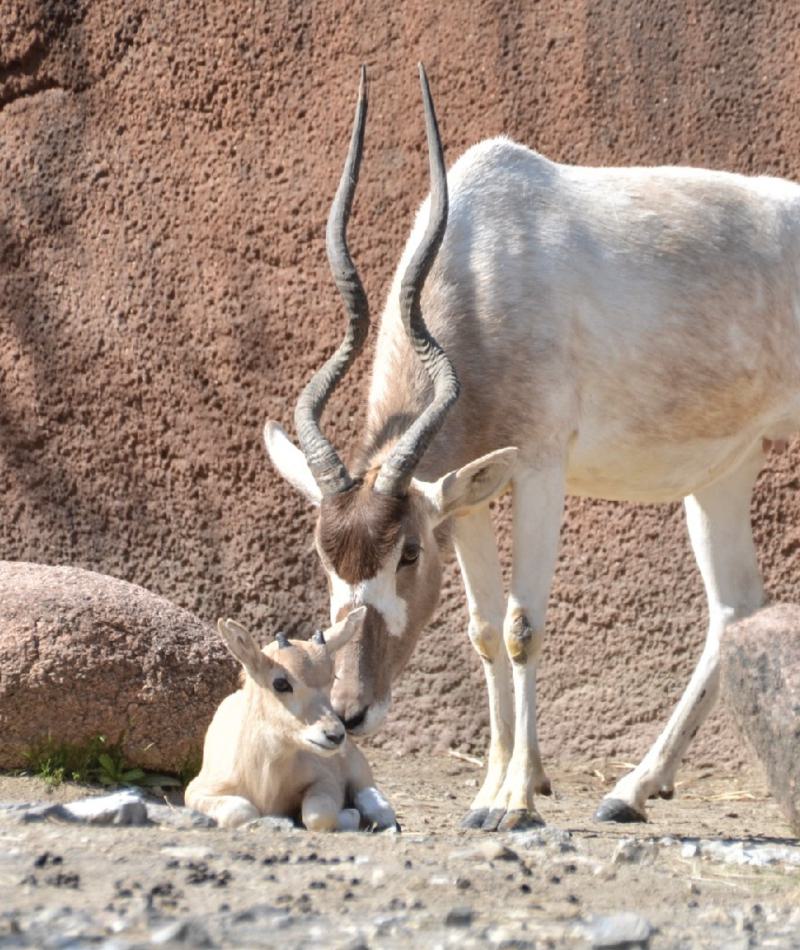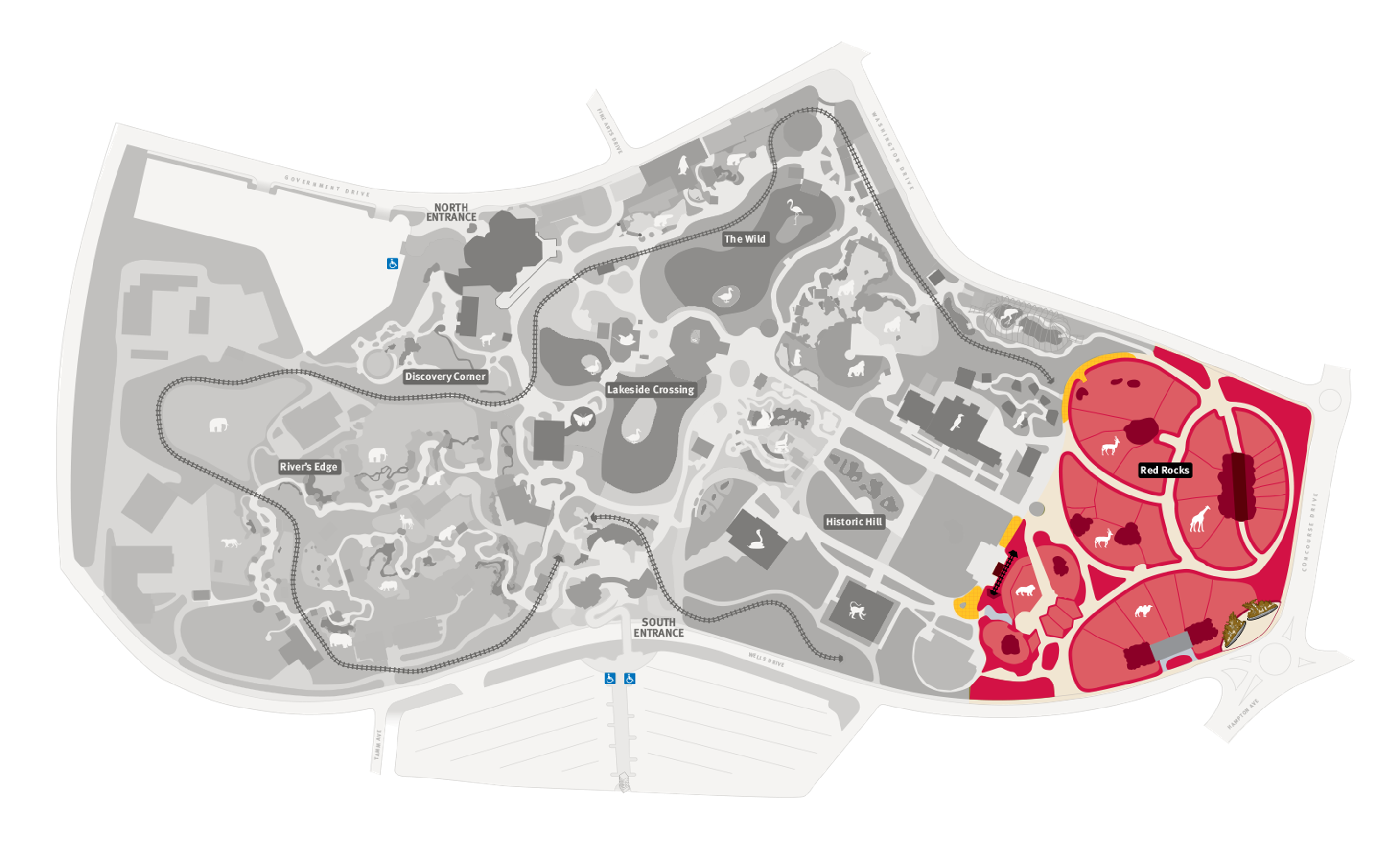
Addax
Addax nasomaculatus
Did you know?
- Addax are part of the Bovidae family, which they share with bison and buffalo.
- They live in the barren deserts of northern Africa, where they browse on any available scrub plants.
- They are herbivores.
- Their average body length is 5.5 feet, and they weigh between 130 and 280 pounds.
- A female gives birth to a single calf at a time.
Adaptations
These large antelopes are well-suited for desert life. Their white haircoats reflect the rays of the scorching desert sun, and their splayed hooves permit easy travel on sand. Their hooves also release a scent on the ground that helps an addax find its herd if separated.
Shelter from the Sun
Addax rest during the warmest hours of the day and take shelter near bushes and rocks. They also may dig shallow holes for themselves in the cooler earth.
Threat Level
- Unknown
- Common
- Near Threatened
- Threatened
- Endangered
- Critically Endangered
- Extinct in the Wild
Critically Endangered
The Addax faces an extremely high risk of extinction in the wild.
Range
Sahara desert
(in Africa)
Habitat
Sandy and stony deserts

We care about addax
Overhunting, political insecurity and disturbance within their habitat by oil exploration threaten their existence. In recent years, the number of wild addaxes has plummeted to near extinction.
The Saint Louis Zoo WildCare Institute’s Saharan Wildlife Recovery Center works with a variety of partners, like the Sahara Conservation, to save the addax. Additionally, the Zoo participates in the Zoos and Aquariums Species Survival Plan for the addax. This is a cooperative breeding program, with a number of zoos working together to ensure the survival of the species.
Learn more about how we are helping addax in the wild.
Find this animal in Red Rocks

SAINT LOUIS ZOO ZONE
Red Rocks
At Red Rocks, you’ll view some of the world’s most powerful predators living near some of the world’s most graceful prey. Lions, tigers, zebra and giraffes all share the natural rocky boulders and outcroppings as their territory. With shading trees and a bird or two among the mammals, Red Rocks is a great place to spend a day at the Saint Louis Zoo.

